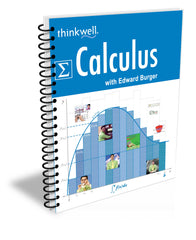19.1 Sequences
19.1.1 The Limit of a Sequence
19.1.2 Determining the Limit of a Sequence
19.1.3 The Squeeze and Absolute Value Theorems
19.2 Monotonic and Bounded Sequences
19.2.1 Monotonic and Bounded Sequences
19.3 Infinite Series
19.3.1 An Introduction to Infinite Series
19.3.2 The Summation of Infinite Series
19.3.3 Geometric Series
19.3.4 Telescoping Series
19.4 Convergence and Divergence
19.4.1 Properties of Convergent Series
19.4.2 The nth-Term Test for Divergence
19.5 The Integral Test
19.5.1 An Introduction to the Integral Test
19.5.2 Examples of the Integral Test
19.5.3 Using the Integral Test
19.5.4 Defining p-Series
19.6 The Direct Comparison Test
19.6.1 An Introduction to the Direct Comparison Test
19.6.2 Using the Direct Comparison Test
19.7 The Limit Comparison Test
19.7.1 An Introduction to the Limit Comparison Test
19.7.2 Using the Limit Comparison Test
19.7.3 Inverting the Series in the Limit Comparison Test
19.8 The Alternating Series
19.8.1 Alternating Series
19.8.2 The Alternating Series Test
19.8.3 Estimating the Sum of an Alternating Series
19.9 Absolute and Conditional Convergences
19.9.1 Absolute and Conditional Convergence
19.10 The Ratio and Root Tests
19.10.1 The Ratio Test
19.10.2 Examples of the Ratio Test
19.10.3 The Root Test
19.11 Polynomial Approximations of Elementary Functions
19.11.1 Polynomial Approximation of Elementary Functions
19.11.2 Higher-Degree Approximations
19.12 Taylor and Maclaurin Polynomials
19.12.1 Taylor Polynomials
19.12.2 Maclaurin Polynomials
19.12.3 The Remainder of a Taylor Polynomial
19.12.4 Approximating the Value of a Function
19.13 Taylor and Maclaurin Series
19.13.1 Taylor Series
19.13.2 Examples of the Taylor and Maclaurin Series
19.13.3 New Taylor Series
19.13.4 The Convergence of Taylor Series
19.14 Power Series
19.14.1 The Definition of Power Series
19.14.2 The Interval and Radius of Convergence
19.14.3 Finding the Interval and Radius of Convergence: Part One
19.14.4 Finding the Interval and Radius of Convergence: Part Two
19.14.5 Finding the Interval and Radius of Convergence: Part Three
19.15 Power Series Representations of Functions
19.15.1 Differentiation and Integration of Power Series
19.15.2 Finding Power Series Representations by Differentiation
19.15.3 Finding Power Series Representations by Integration
19.15.4 Integrating Functions Using Power Series






